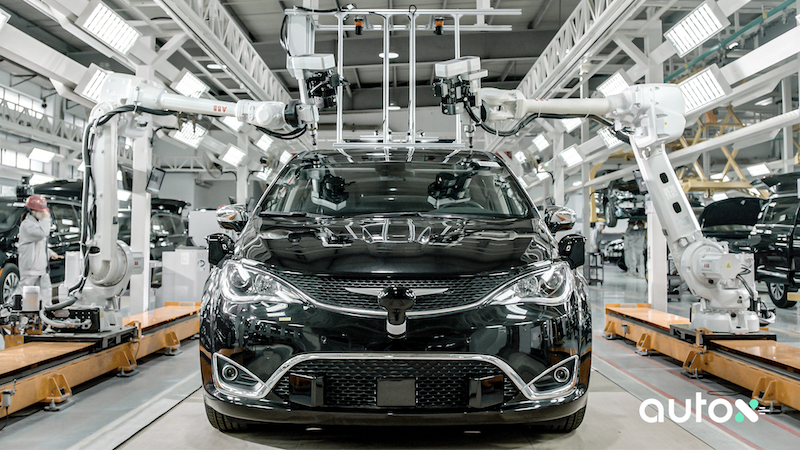
AutoX builds ‘first’ dedicated robotaxi manufacturing line in China
AutoX, the autonomous car developer backed by e-commerce colossus Alibaba, has built what is believed to be the first-ever production line specifically designed to build autonomous robotic taxis. (See video below.)
AutoX claims to be “the front-runner in Level 4 fully autonomous robotaxis in China”, but it has relatively strong competition in the form of Apollo, which is backed by another internet giant, Baidu, China’s equivalent of Google.
AutoX has built what it says is “the first dedicated production facility in the country to produce Level 4 fully driverless robotaxis”, as shown in the startling pictures accompanying this article, which AutoX supplied.
Fleets of AutoX’s Gen5 system-equipped robotaxis – which were officially launched in July this year and operate without accompanying safety drivers – are already rolling off the production line and getting ready to hit the road as demand continues to soar for autonomous vehicles (AVs).
AutoX says its new production facility marks a major milestone in China’s autonomous vehicle industry, adding that a dedicated production line is “critical to guarantee the quality, safety, and consistency of every robotaxi”. The facility is the first of its kind in China.

Purposefully designed and built by AutoX, the factory produces the company’s cutting-edge Gen5-powered robotaxi fleet. Since the factory opened in July 2021, the production line has completed three rounds of design and process optimizations to churn out AutoX’s signature RoboTaxis with an extremely high level of accuracy and consistency.
To coincide with this announcement, AutoX has released a new video of its robotaxi factory while it is in operation, allowing viewers to see the inside of its state-of-the-art production line specifically designed to put together AutoX’s fully autonomous Gen5 driving system and robotaxi.
To ensure the production-level quality of the complex autonomous driving system, the production lines are equipped with a range of advanced production technologies and systems, including ABB robots, and control and transmission systems designed by Siemens, Omron, Schneider Electric, Philips, SEW, and Mitsubishi.
The video also offers viewers a peek at the AutoX Gen5 system for the first time, giving them a close look at the wiring and assembly of the two main sensor towers and blind-spot sensor suites.
Hidden in the trunk of the robotaxi is the AutoX XCU, the vehicle computing unit that powers the autonomous driving software stack as well as all of the vehicle’s high resolution sensors via automotive-grade connectors.
The computer is connected to liquid cooling devices integrated with the vehicle’s thermal management system. After installation, the compact AutoX XCU is tucked neatly under the trunk bed, leaving enough room for passengers’ luggage.
Every robotaxi coming off the pre-delivery inspection line then proceeds to the automatic multi-sensor calibration turntable, and goes through wheel calibration as well as temperature and waterproof testing. As soon as a robotaxi leaves the facility’s gates, it is ready to operate autonomously.
AutoX currently operates China’s largest service area for fully driverless robotaxi across 65 square miles (168 square kilometers) of Shenzhen. The vehicles are able to navigate all public roads in the Pingshan District of Shenzhen, which makes AutoX the first driverless robotaxi service to cover an entire district in a Chinese megalopolis.
